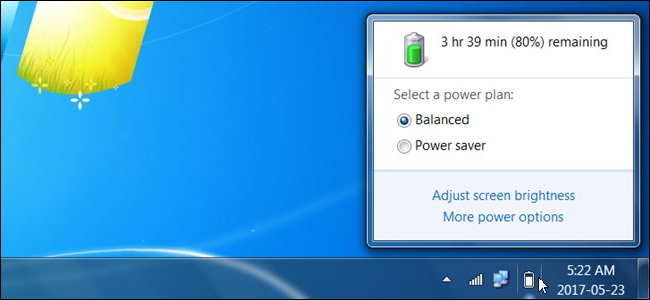When it comes to taking care of the batteries in our laptops, it can be a bit of a trick at times, like how high and low we should allow the charge and discharge levels to be, for example. With that in mind, today's SuperUser Q&A post has the answer to a concerned reader's question.
Today’s Question & Answer session comes to us courtesy of SuperUser—a subdivision of Stack Exchange, a community-driven grouping of Q&A web sites.
The Question
SuperUser reader Aalok wants to know how to manage charging cycles in order to extend a laptop battery's life:
My laptop is used throughout the day for various types of work. I start after breakfast and continue working until about 9 p.m., when I take a break for dinner, then I continue to work for another hour or two afterwards. During these long days, my laptop's battery discharges at least a couple of times.
What I currently do is plug it in to start recharging whenever the battery drops below 25 percent and keep it plugged in until it fully recharges to 100 percent. This is usually repeated three times each day.
Lately though, I have grown more concerned about this and each time I plug it in to recharge, I worry that I am actually causing damage rather than helping to preserve (extend) the battery's life (considering that I constantly sit next to a power source, but make the battery work hard all day).
Is there any way that I can optimize my current recharging "methods" to extend the general durability and endurance of my laptop's battery?
How do you manage charging cycles to extend a laptop battery's life?
The Answer
SuperUser contributor Ravexina has the answer for us:
Batteries have a finite life and there are many different aspects involved, however, the one we are concerned about here is cycle life.
- The cycle life is the number of complete charge/discharge cycles that a battery is able to support before its capacity falls to under 80 percent of its original capacity.
Source: What is the Meaning of a Battery's "Cycle Life"? [Electrical Engineering Stack Exchange]
In other words:
- In general, the number of cycles for a rechargeable battery indicates how many times it can undergo the process of completely charging and discharging until it fails or it starts to lose capacity.
Source: Charge Cycle [Wikipedia]
What you are doing is repeating this cycle over and over, thus decreasing your laptop battery's life. Remember that you should not let your laptop's battery be repeatedly charged to 100 percent of its capacity or fully discharged to 0 percent. So the best thing to do is control the charging process.
Based on your laptop's brand, there might be different tools available to you. For example, if you have a Lenovo ThinkPad, you can use tlp to easily manage this process. It has multiple configuration settings that allows you to control the battery's charge thresholds. For example:
- Charging starts when connecting to a power source, but only if the remaining capacity is below the value of START_CHARGE_THRESH (start threshold). Charging stops when the STOP_CHARGE_THRESH (stop threshold) value is reached. If, however, when you connect the AC adapter and the current charge level is above the start threshold, then it will not charge.
Source: ThinkPad Battery Charge Thresholds [LinRunner]
This allows you to keep your laptop plugged in all the time while also controlling the charging process. Somewhere between 60-65 percent while you have your laptop plugged in is a safe range to go with.
Have something to add to the explanation? Sound off in the comments. Want to read more answers from other tech-savvy Stack Exchange users? Check out the full discussion thread here.


